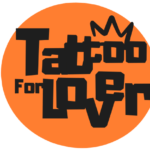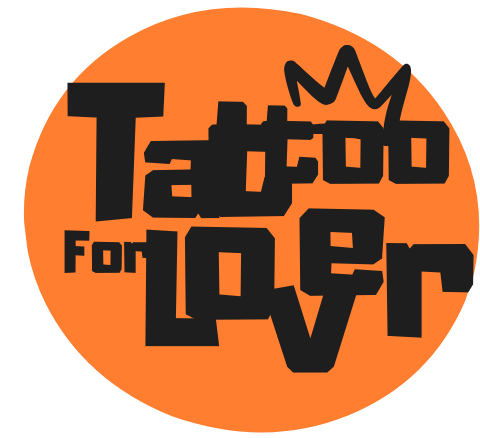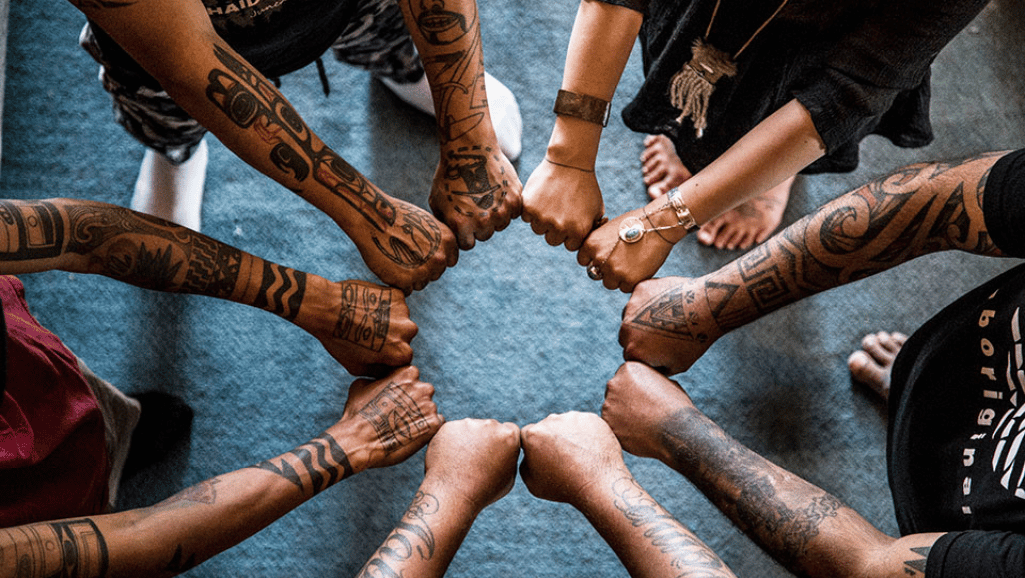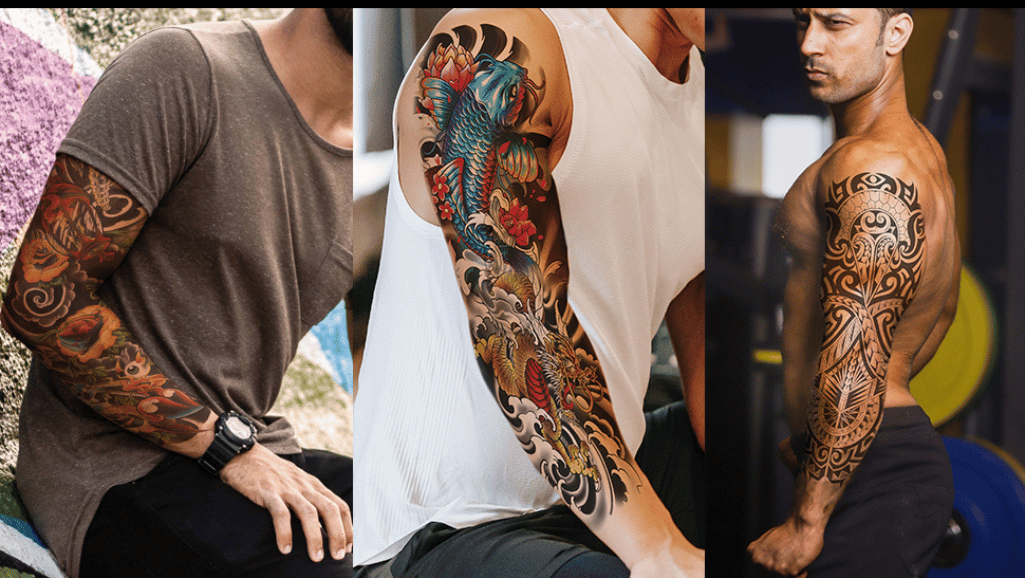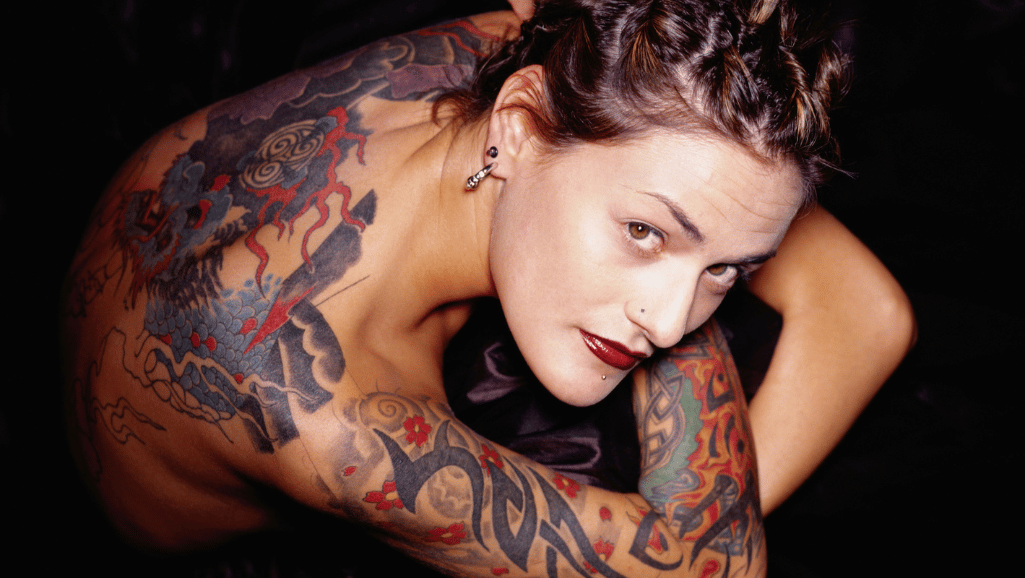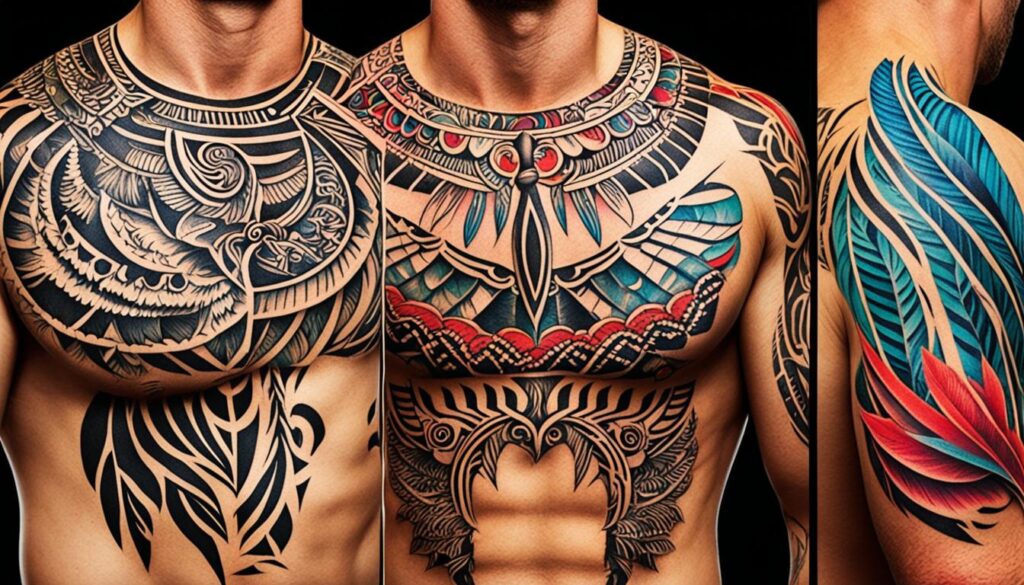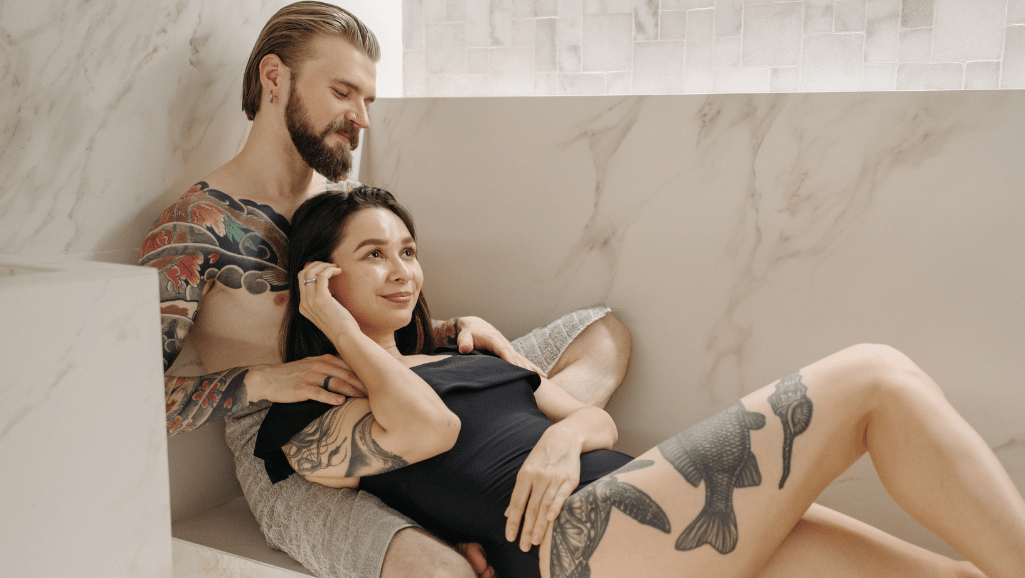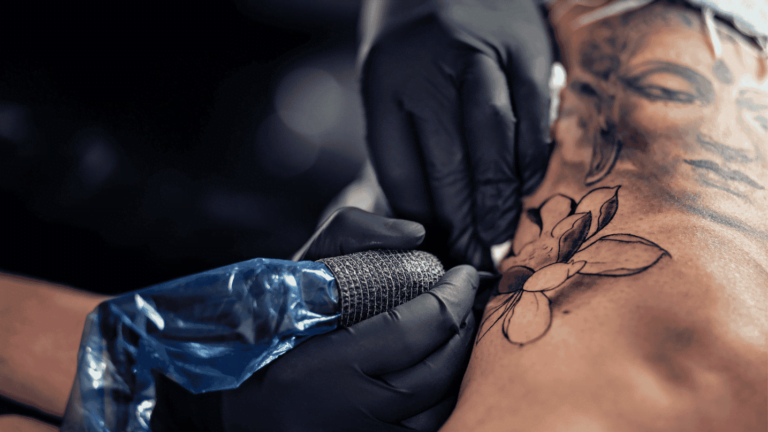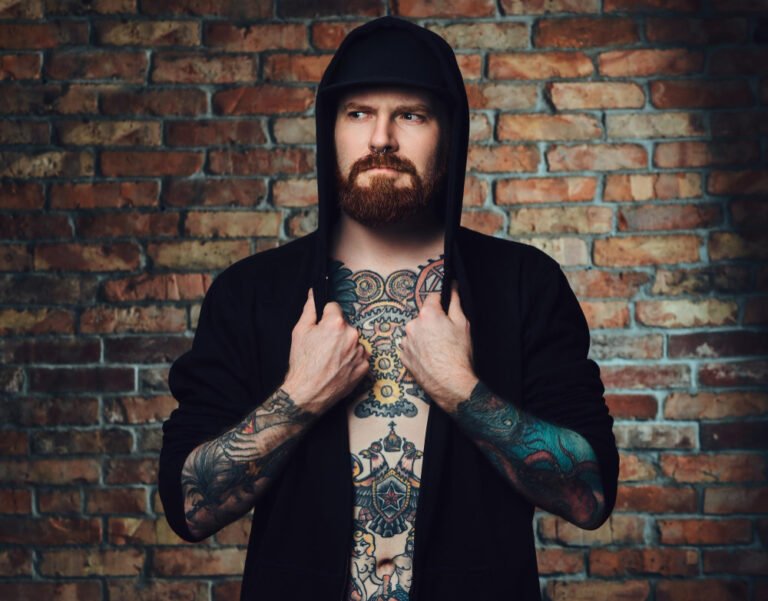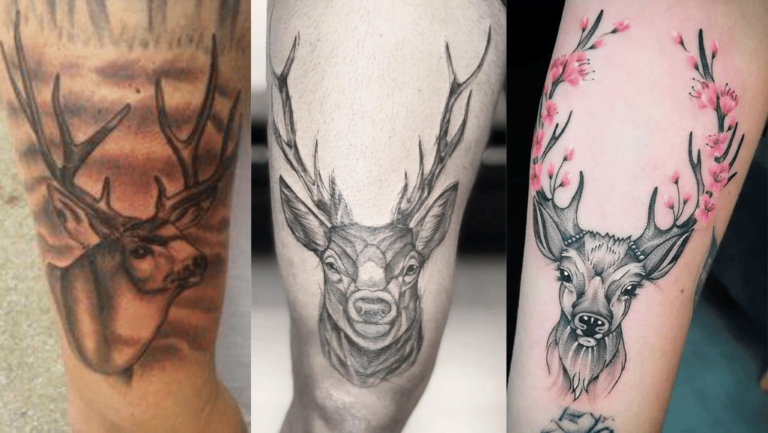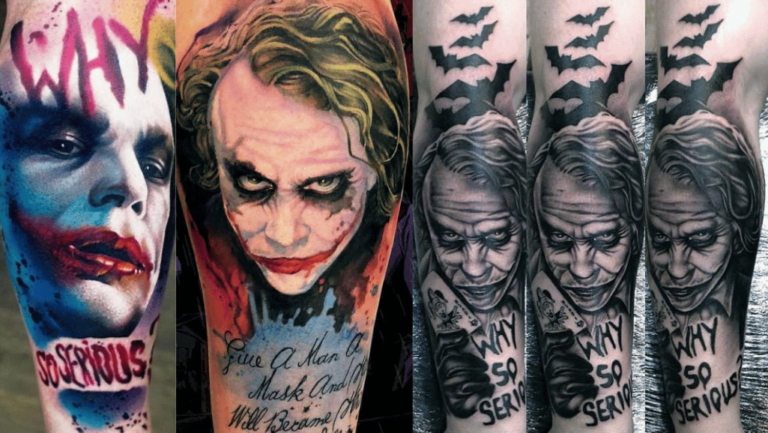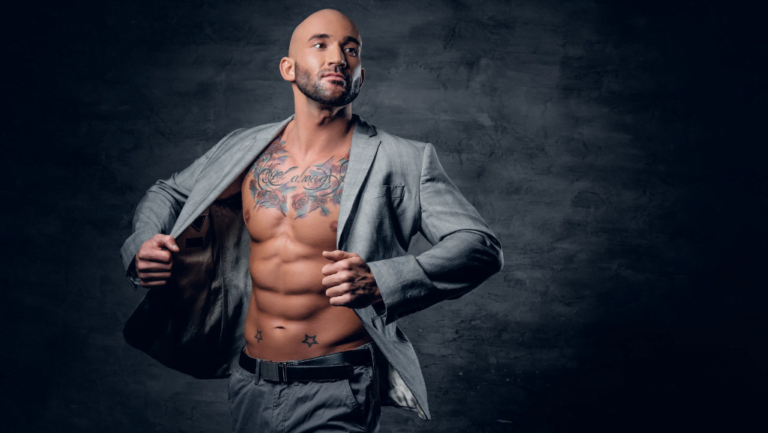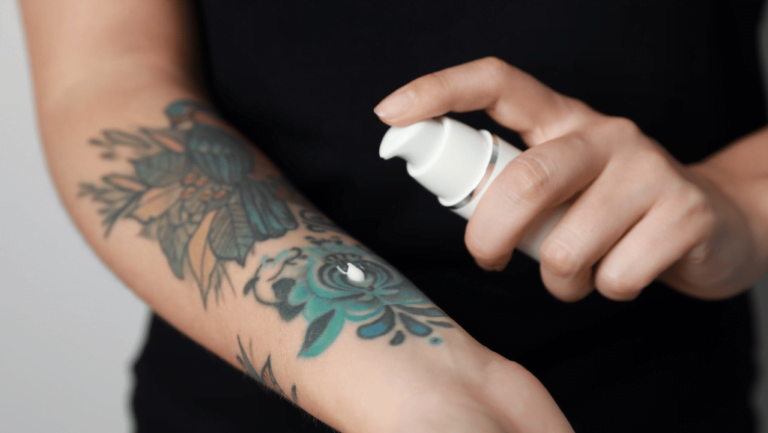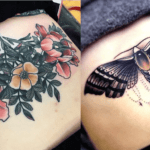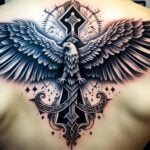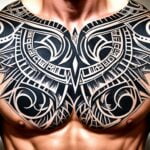Tattoos are more than just body art. They are a powerful way to express oneself, mark important life events, and show cultural identity. From ancient times to today, tattoos have been key in telling personal stories and showing the rich variety of human culture. Let’s explore the history, symbolism, and artistic side of tattoos that have fascinated people for so long. Miscellaneous and Cultural Aspects tattoos?
Recently, tattoos have moved beyond their traditional look and blended with fashion. Many designers now use tattoo-inspired designs in their work. This mix of body art and fashion lets people share their tattoo meanings and style through clothes and accessories. Mad Rabbit Tattoo offers top-notch aftercare products to keep these tattoos looking great, keeping their cultural importance alive for years.
The changing tattoo trends and growing acceptance of body art have made tattoos a recognized form of art. Tattoo events, shows, and galleries let us see the amazing skills and creativity of artists worldwide. They show the wide range of styles and techniques in tattoo history. Celebrating tattoos lets us connect with our history, express ourselves, and feel part of a community.
Key Takeaways
- Tattoos serve as powerful symbols of self-expression, cultural identity, and personal narratives
- The fusion of tattoos and fashion has created new avenues for showcasing body art and personal style
- Tattoo trends and mainstream acceptance have contributed to the recognition of tattoos as a legitimate art form
- Tattoo conventions, exhibitions, and galleries highlight the diverse styles and techniques in tattoo history
- Tattoos connect us to our past, express our individuality, and create a sense of belonging within communities
The Historical Paths of Tattooing
Tattooing is an ancient form of body art with a rich history. It spans across cultures and continents. From Neolithic times to today, tattoo traditions have evolved. Let’s explore the stories and rituals that have shaped this art.
Neolithic Origins of Tattoos
The history of tattoos goes back to the Neolithic era. Human remains with tattoos have been found all over the world. Otzi the Iceman, a 5,000-year-old mummy, had 61 tattoos. Researchers think they might have been for healing, like acupuncture.
Polynesian Tattoo Traditions
In Polynesian societies, tattoos were key to their culture. They were tied to tradition and social status. The tattoos told stories of personal and family history, and spiritual beliefs.
Tattooing was a big deal, marking important life events. The Maori in New Zealand’s tattoo traditions still influence tattoo artists today. These ancient practices continue to inspire.
“Tattoo, a mark of shame, humiliation, alienation, marginalization is now considered a desirable accessory, a fashion statement, a trendy experiment and – depending on the quality of its execution – an object and subject, an extravagant expense, an external embellishment of the self, a signifier of a sort of outlaw status and a willfully embraced primitivism.”
Ancient Egyptian Tattoos
Ancient Egyptians were early tattoo artists. They used tattoos to show status and protect against evil. Women’s tattoos showed their fertility and offered protection against sickness.
Designs included religious symbols like the Eye of Horus or the Ankh. The Mummy of Amunet, a priestess of Hathor, shows tattoos’ importance in ancient Egypt.
Exploring tattoo history helps us appreciate its rich traditions. From Neolithic times to Polynesian rituals and Egyptian tattoos, it’s clear. This art has always been about self-expression, cultural identity, and spiritual connection.
As tattoo anthropology reveals more, we see its lasting impact. Tattoos tell stories, mark important times, and connect people across generations.
Symbolism in Tattoos: More Than Skin-Deep
Tattoos are more than just body art. They let people share their deepest beliefs and stories. Each tattoo has a special meaning, personal or cultural, making it a deep way to express oneself.
The Power of Iconography in Tattoo Art
Iconography is key in tattoo art. It lets people share complex ideas and feelings with symbols. For example, flowers can mean growth and beauty, while birds stand for freedom and peace.
Cultural tattoos are full of symbolism. In Japan, “irezumi” tattoos tell stories with heroes and symbols. Indigenous tribes like the Tlingit and Nisga’a use tattoos to connect with their heritage and identity.
Personal Narrative Tattoos: Telling Your Story
Personal narrative tattoos let people share their stories. They can show personal journeys, healing, or just beauty. Many get tattoos to express who they are, heal, or simply look good.
“My tattoos are a reflection of who I am and what I’ve been through. Each one tells a different chapter of my life story, from the challenges I’ve overcome to the moments of joy and love that have shaped me.” – Amberley John, Tattoo Artist
The tattoo process is very personal. It involves talking with the artist, making a design, and taking care of the tattoo after. This teamwork makes sure the tattoo tells the right story of the person getting it.
In the end, tattoos mean more than just looks. They let people share their stories, culture, and beliefs through body art. As tattoos become more popular, their symbolism shows how this ancient art still matters today.
Techniques and Styles: From Traditional to Modern
The world of tattoo art is a mix of old traditions and new innovations. It ranges from the detailed hand-poked designs of Japanese Tebori to the bold lines made by electric machines. This evolution has led to many styles that mix different cultures and times. Artists and fans now use both old and new methods to make beautiful tattoos.
Traditional Tattooing Methods: Tebori and Hand-Poked Techniques
Traditional tattooing, like the Japanese Tebori, has been around for a long time. It uses a bamboo tool with fine needles to poke designs into the skin. This method needs a lot of skill and patience, making tattoos that connect deeply with culture and tradition.
Hand-poked tattoos are also found in many places. In the Polynesian islands and the Arctic, people use sharp bones or thorns to make tattoos. These tattoos have deep meanings and are often given during important life events or to show status.
Modern Tattoo Techniques: Electric Machines and Innovative Styles
The electric tattoo machine changed tattooing in the late 19th century. It made tattoos faster, more precise, and versatile. Now, artists use different machines to make many styles, from classic to hyper-realistic.
New styles have also changed tattooing. Watercolor tattoos look like paint on paper, giving a soft, flowing effect. Geometric tattoos use bold lines and shapes for striking, abstract designs.
The beauty of modern tattooing lies in its ability to combine elements from different styles and techniques, creating a truly unique and personalized work of art.
Artists are always finding new ways to tattoo, using new materials and tech. The future of tattoos looks exciting, with things like UV-reactive inks and 3D tattoos that seem to pop off the skin.
| Traditional Tattoo Techniques | Modern Tattoo Techniques |
|---|---|
| Hand-poked methods (e.g., Tebori) | Electric tattoo machines |
| Natural materials (e.g., bamboo, bone) | Manufactured needles and inks |
| Intricate, time-consuming process | Faster, more precise application |
| Deeply rooted in cultural traditions | Constantly evolving and innovating |
Tattoos Around the World: Cultural Differences and Similarities
Tattoos have been a key part of human culture for thousands of years. Different cultures have their own unique ways of embracing this art. From the detailed tribal tattoos of indigenous groups to the vibrant designs of Japanese Irezumi, tattoos show a wide range of traditions and styles.
Ethnographic Tattooing: Exploring Cultural Practices
Ethnographic studies look into tattooing traditions. They show us the deep beliefs and practices behind these ancient arts. By looking at the norms, rituals, and symbols of tattoo cultures, we learn about their importance in communities.
Tribal Tattoos: Rites of Passage and Protective Charms
Tribal tattoos are more than just decorations. They are symbols of identity, spiritual protection, and important life events. For example, Polynesian tattoos tell stories of bravery and strength. Native American tattoos carry deep spiritual meanings.
“Tattoos are not just skin deep; they are soul deep. They represent our stories, our struggles, and our triumphs.” – Unknown
Japanese Irezumi and Maori Ta Moko: Unique Cultural Expressions
The Japanese Irezumi and the Maori Ta Moko are standout examples of cultural tattoos. Irezumi, linked to the Yakuza, features bold lines and vibrant colors. It symbolizes a challenge to societal norms. Ta Moko, rooted in Maori tradition, shares the wearer’s family history and achievements through detailed patterns.
| Tattoo Culture | Significance | Unique Features |
|---|---|---|
| Polynesian | Bravery, strength, and personal identity | Intricate patterns and symbolism |
| Native American | Spiritual protection and cultural heritage | Sacred designs and tribal motifs |
| Japanese Irezumi | Defiance against societal norms | Bold lines, vibrant colors, and mythological imagery |
| Maori Ta Moko | Family history, social status, and personal achievements | Intricate patterns and designs unique to each individual |
Exploring tattoo cultures around the world shows us the power of this ancient art. It connects us to our past, lets us express our identities, and tells our stories in a way that goes beyond words. By celebrating the diversity of tattooing traditions, we honor the resilience and creativity of the human spirit.
The Social Perception of Tattoos: From Taboo to Acceptance
Tattoos have changed a lot in how people see them, moving from being taboo to being accepted. This change happened slowly, thanks to new attitudes and tattoos becoming more common in everyday life.
Before, tattoos were linked to certain groups and were seen as taboo. This made people with tattoos face discrimination and stereotypes. Tattoos were seen as linked to crime, rebellion, and being from a lower class.
Historical Stigma Surrounding Tattoos
Tattoos have always had a bad reputation. In Europe and North America, they were seen as something only the lower classes did. This led to laws against tattooing in the 1910s in Germany and the 1930s in the US. In 1961, tattoos were banned in New York City because of worries about hepatitis.
But tattoos have been around the world for a long time. Europeans knew about them before explorers started to travel. The invention of the electric tattoo machine in the 19th century made tattoos more popular. As tattoos became cheaper and more accessible, people started to see them differently.
The Shift Towards Mainstream Acceptance
In recent years, tattoos have become more accepted. The ban on tattoos in New York City was lifted in 1997, which helped tattoos become popular again. This change is thanks to tattoos being more visible in movies and TV, famous people with tattoos, and seeing tattooing as an art.
Studies show more people are getting tattoos and body modifications. The Pew Research Center found 36% of Americans aged 18 to 25 have a tattoo. This number is expected to go up to 40% among the next generation. Tattoos are popular among both men and women, especially in their 20s.
| Year | Percentage of US Adults with Tattoos |
|---|---|
| 2012 | 20% |
| 2024 | 40% |
People’s views on tattoos are changing with the generations. Most people over 65 see more tattoos as a bad thing. But people under 50 think tattoos haven’t really changed society much.
But, tattoos can still be a problem in some jobs, especially for women. Research shows that tattoos can make people think less of healthcare workers with tattoos. Female doctors with tattoos are judged more than male doctors.
Even with these issues, tattoos are becoming more accepted. As tattoos are seen as a way to express oneself and as art, the old stigma is fading. This makes society more open and accepting of tattoos.
Tattoos as a Form of Self-Expression and Identity
Tattoos have become a key way for people to express themselves and show who they are. They let individuals share their unique traits, beliefs, and life stories. In our diverse world, tattoos act as a visual language that goes beyond words, helping people share their stories and values.
The way people view tattoos has changed, making them a respected form of art. Tattoo artists are now celebrated for their skills, creating beautiful pieces that cover the skin. From classic to modern styles, the tattoo world keeps growing, offering many ways for people to express themselves.
“Tattoos are not just ink on skin; they are a visual narrative of one’s life story, a testament to the triumphs, struggles, and passions that shape who we are.”
Tattoos bring people together, linking those with similar interests or experiences. Tattoo communities have formed, offering a sense of belonging and friendship. These groups honor tattoo art and give people a place to share their stories and feel accepted.
Now, tattoos are more appreciated for their artistry and cultural importance. Museums and galleries display tattoo art, seeing it as a true art form. Tattoo events draw in fans, offering a space for artists and collectors to meet, learn, and celebrate tattoo culture. The complexity of tattoo styles has grown, with artists creating stunning pieces that blend art and body art.
| Tattoo Motivation | Percentage |
|---|---|
| Religious reasons | 25% |
| Belonging to a group | 20% |
| Proving masculinity and toughness | 15% |
| Asserting independence | 15% |
| Enhancing feminine image | 10% |
| Fashion and social resistance | 15% |
Tattoos are becoming more accepted and valued, helping people express their true selves. They connect people and celebrate diversity. Tattoos are now a key part of our society, weaving together the stories of those who proudly show their hearts on their sleeves.
The Role of Tattoos in Popular Culture
Tattoos have become a big part of our culture. They influence music, film, TV, art, how we see ourselves, and fashion. As tattoos become more accepted, they let people express themselves and celebrate being unique. Celebrities often lead the way in what tattoos are in style.
Celebrities have a big impact on tattoo trends. Stars from music and movies show off their tattoos, inspiring fans to get the same ones. These tattoos often mean a lot to the celebrities, telling stories of their lives or expressing their creativity. This makes fans feel closer to their idols and more likely to copy their tattoo choices.
Celebrity Influence on Tattoo Trends
Celebrities have shaped tattoo culture and set trends. Here are some examples:
- David Beckham’s many tattoos have inspired fans to get similar ones.
- Rihanna’s bold tattoos have influenced fashion and style.
- Johnny Depp’s tattoos, linked to his roles and life, have sparked interest in similar designs.
- Angelina Jolie’s meaningful tattoos have encouraged others to get tattoos with deep significance.
Tattoos in Film, Television, and Music
Tattoos in movies, TV, and music have changed how people see them. Tattoos on characters are often seen as symbols of strength and creativity. This positive view has helped erase old stereotypes and made tattoos more accepted.
Tattoo reality shows like Ink Master and LA Ink have made tattoos more popular. These shows bring tattooing into the spotlight, showing the skill of tattoo artists. They make the tattoo process clear and share the stories behind the ink, sparking interest in tattoo culture and inspiring viewers to get tattoos.
| Popular Tattoo Reality Shows | Premiered | Network |
|---|---|---|
| Miami Ink | 2005 | TLC |
| LA Ink | 2007 | TLC |
| Ink Master | 2012 | Paramount Network |
| Black Ink Crew | 2013 | VH1 |
In conclusion, tattoos are a big part of our culture now. They shape trends, influence fashion, and are a powerful way to express oneself. As celebrities and the media keep showing tattoos in a good light, tattoos will likely keep growing in acceptance and importance in our society.
Tattoo Artistry and the Rise of Tattoo Culture
Tattoo artistry has grown a lot in recent years. It has moved from a small practice to a big part of our culture. Now, tattoo culture draws in people from all backgrounds. It’s a way for them to express themselves and be creative.
Tattoo Conventions and Exhibitions
Tattoo conventions and exhibitions show how popular tattoo art has become. These events bring together artists and fans from all over. They let artists show their work, share tips, and meet others in the field.
These events let people learn about tattoo culture and its history. You can see live tattooing, go to seminars, and even get a tattoo from top artists. The excitement and celebration at these events show how tattoos are becoming more accepted.
The Evolution of Tattoo Artists and Their Craft
Tattoo artists have changed a lot over time. They used to be seen as outsiders. Now, they are seen as skilled professionals and respected artists.
Today’s tattoo artists come from different artistic backgrounds. They use traditional art and new techniques to make unique tattoos. Their work has made tattooing a respected art form.
The tattoo industry has become more professional and regulated. Studios follow strict health rules, and artists get a lot of training. They learn about anatomy, color theory, and art history to improve their skills.
The growth of tattoo culture shows a big change in how we see self-expression and art. It’s not just a trend. It’s a sign of a deeper shift in society. As tattoo artistry keeps growing, we’ll see more creativity and cultural impact.
Miscellaneous and Cultural Aspects Tattoos
Tattoos have a long history across many cultures worldwide. They mean different things to different people, from spiritual symbols to cultural markers. Let’s look at how tattoos fit into religious practices, cultural identity, and alternative communities.
Religious and Spiritual Tattoos
For many, tattoos are a way to express their faith and spirituality. They might choose symbols, verses, or images that are important to their belief. Christians might get a cross or a bible verse, while Buddhists might choose a Buddha or a lotus flower.
Hindu devotees often get tattoos of deities like Ganesha or Om symbols. These tattoos are not just for show. They remind the wearer of their faith and spiritual path.
Tattoos as Cultural Heritage and Tradition
In many cultures, tattoos are a big part of their heritage. Tribal tattoos, for example, tell a lot about a person’s identity and background. The Maori people of New Zealand have a tradition called Ta Moko, which tells stories of family and tribe.
In Borneo, tattoos are believed to protect the wearer from evil spirits and bring luck. They are a key part of the indigenous culture there.
“Tattoos are not just a form of body modification; they are a visual language that tells the story of one’s cultural identity and personal journey.”
Tattoos in Subcultures and Alternative Communities
Tattoos are big in subcultures and alternative communities too. In punk rock, they show off a rebellious attitude. Skateboarders often get tattoos that reflect their love for the sport and lifestyle.
The LGBTQ+ community also uses tattoos to show pride and unity. Designs can range from rainbow flags to empowering quotes.
Today, tattoos are more accepted than ever before. This shift has changed how society views them, from seeing them as rebellious to valuing them as art and cultural symbols [1].
| Culture | Tattoo Tradition | Significance |
|---|---|---|
| Maori | Ta Moko | Family history, tribal affiliation, personal achievements |
| Borneo Tribes | Traditional Tribal Tattoos | Protection, identity, social status |
| Japanese | Irezumi | Yakuza affiliation, defiance against societal norms |
Tattoos are more than just body art. They are a way to express who we are, what we believe, and where we come from. By understanding tattoos in this way, we can appreciate their value and significance.
The Future of Tattoos: Trends and Predictions
Tattoo culture is growing fast and becoming more accepted. New styles and trends keep coming, making tattoos more popular. Now, people can choose from minimalist to full-body tattoos. Hyper-realistic portraits, watercolor-style tattoos, and blackwork geometric designs are just a few of the latest trends.
Even with their popularity, some people regret getting tattoos and want to remove them. The tattoo removal industry is getting better with new technology. A study in the Journal of Clinical and Aesthetic Dermatology shows more people know about the risks of tattoos now.
As tattoos become more common, ethical issues come up. Artists and fans must respect the culture behind tattoos. It’s important to know the history and meaning of tattoo designs to avoid disrespect.
The shift in societal perceptions from stigmatizing tattoos to celebrating them as forms of self-expression shows a significant change in how tattoos are now viewed as milestones of personal identity and emotional storytelling.
The aftercare products for tattoos are a big deal, worth about $270 million. Companies like Tattoo Goo and Hustle Butter are doing well. Now, people want organic, vegan, and cruelty-free products for their tattoos.
| Region | Market Share | Growth Potential |
|---|---|---|
| North America | Significant | High CAGR |
| Europe | Substantial | Driven by lifestyle shifts and younger generation’s interest |
| Asia-Pacific, Latin America, Middle East & Africa | Pivotal players | Significant contributions from countries like China, Japan, India, Brazil, Argentina, and GCC |
The tattoo needle market is expected to grow from US$ 289.8 Mn in 2023 to US$ 403.8 Mn by 2031. North America and Europe are leading the market. But, the industry faces challenges like strict health rules, fake needles, changing tastes, supply chain problems, and price changes.
Tattoos are becoming more than just body art. They are a way to express oneself and tell stories, as seen on TattoosForLover.com. With new techniques and ethical practices, tattoos will continue to grow in popularity.
Conclusion
Tattoos have been a key way for people to express themselves, show their beliefs, and keep traditions alive. They have been used in many cultures and times, from ancient Egypt to Polynesian tribes. These tattoos mean more than just pretty pictures on the skin. They carry deep meanings that touch both the person wearing them and those who see them.
Today, tattoos have many styles and ways of being made. This has made people appreciate tattoo artists more for their skill and creativity. Things like tattoo shows and being in the media have helped tattoos become more accepted. This has changed how society sees body art.
Looking ahead, tattoos will likely keep changing with us. They can be a way to express oneself, keep cultural traditions, or be a form of art. The importance of tattoos stays strong and meaningful. We value the impact they have had on us and look forward to seeing where they will go next.
FAQ
What is the cultural significance of tattoos?
How have tattoo techniques evolved over time?
What role do tattoos play in self-expression and identity?
How have celebrities influenced tattoo trends?
What are some popular tattoo styles and designs?
How has society’s perception of tattoos changed over time?
What should one consider before getting a tattoo?
Forhad
Forhad's writing is not just about the artistry of tattoos or the latest trends in the industry; it's an exploration of the deep-rooted connections people have with their tattoos, reflecting personal narratives, cultural histories, and moments of transformation. Through a mix of in-depth features, personal narratives, and insightful analyses, he sheds light on the multifaceted nature of tattooing, revealing the emotional and cultural layers that lie beneath the surface.
